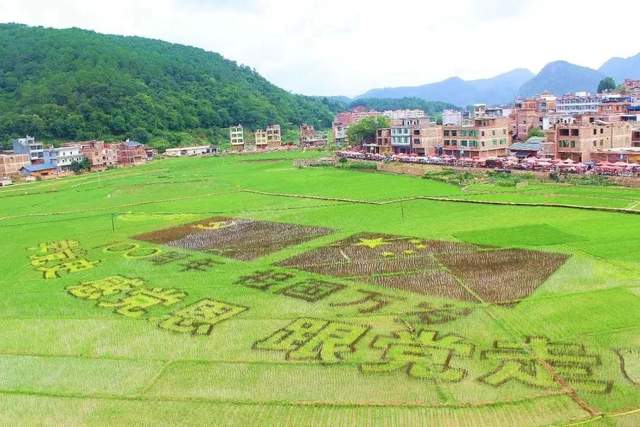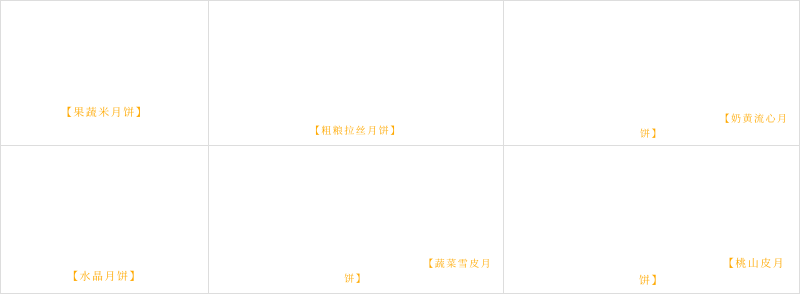Break the three bricks of the "implication" of the "implication" of Jin Yonghe —— Appreciation and Wang Xizhi
Author:Music club Time:2022.09.04
Broken Johnson Jin Yonghe
Three bricks of "implication" with Wang Xizhi's "implication"
Author: An Jian
Incorporating the ancient bricks in Jin Shixue started in the Song Dynasty, and the "Lishu" in the Song Dynasty has recorded the bricks of the Eastern Han Dynasty and the beginning of the early establishment of the Eastern Han Dynasty. In the Song Dynasty, Li Qingzhao Zhao Mingcheng's "Golden Stone Record" also had a small amount of brick records. The collection and research of ancient bricks flourished in the middle and late Qing Dynasty. It mainly benefited from the ZTE of the Jinshi Research of the Qianjia period of the Qing Dynasty. During this period, the Jinshi studies have reached the point of deformity development, becoming a manifestation, and a large number of specialized bricks have appeared. Books in the text, such as Lu Xinyuan's "Qianzhe Pavilion Ancient Brick List", Lu Yisun's "Hundred Brick Tests", Feng Dengfu's "Zhejiang Brick Record", Huang Rui "Taizhou Brick Record", Sun Yingjie "Wenzhou Ancient", Wang Xiu Xiu "Han and Tang Dynasties", Luo Zhenyu's "Gaochang Brick Record" and so on.

Pictured: Lu Yisun's "Hundred Bricks Test"
Ancient bricks are unearthed in many parts of the country, and are mostly Zhejiang, Sichuan, Henan, and Shaanxi. Among them, Zhejiang Chunnian text bricks are particularly many. Some of the ancient bricks in the Qing Dynasty are mostly ancient bricks unearthed from Zhejiang. During the Han and Jin dynasties, Zhejiang's wealthy people were related to the popularity of the popular burial. Secondly, there are many ancient bricks unearthed in Bashu, which are characterized by ancient bricks in Zhejiang.
From the perspective of appearance, Bashu's ancient bricks are thick and heavy, which is lighter than Zhejiang bricks. From the perspective of the decoration, the ancient bricks in Zhejiang are basically text bricks, and there are very few portrait bricks; while Bashu ancient bricks are mainly portrait bricks, but there are also a certain number of text bricks. There are also many ancient bricks unearthed in Henan, and they are mainly portrait bricks. There are more or less ancient bricks from all over the country. The ancient bricks I mentioned here mainly refer to the ancient bricks between the six dynasties of the Han and Jin dynasties. Nowadays, there are two major collections of ancient bricks.
I am mainly collected by text bricks, especially the chronological bricks, and most of them are bricks during the Han and Jin dynasties. The amount of ancient bricks is much more than that of the Qing Dynasty. The main reason is that the land is requisitioned in large quantities, which causes the land to not treasure treasures, and the antiquities are contributed frequently, so that a large number of ancient bricks can be re -see. So it is a good opportunity to collect ancient bricks. Like Qing Dynasty universities, big collectors Ruan Yuan and Zhang Tingji, they only collected eight ancient bricks in Han and Jin. They already thought it was very good. Essence Xie Yunshan has eight pieces of Yongping bricks, and is named "Eight Brick Books".
Feng Dengfu, who wrote "Zhejiang Brick Record", is called "Eight Bricks and Five Bricks", which is also collected by eight bricks. It is not difficult to collect eight bricks of Han and Jin dynasties now. The text bricks I have collected at present are far more than eight. Instead, Ruan Yundai and Zhang Shuwei have been about ten times that of the number of hidden bricks. Now, there are many collectors who are ten times more ancient than me.
The most worthy of my collection of text bricks in my collection is the three ancient bricks of the "implication" of Wang Xizhi, a master of the Eastern Jin Dynasty. Let me talk about the inscriptions of the inscriptions of the Western Jin Dynasty "The Second Years of Tai'an" in the Western Jin Dynasty, and unearthed at the ancient site of the Bishan ancient site in the suburbs of Huzhou.
Tai'an is the era of Sima in the Western Jin Dynasty. In the second year of Tai'an, in 303 AD, it was related to the two large calligraphers of the Jin Dynasty in the Jin Dynasty. This year. This brick in the Qing Dynasty Lu Xinyuan's "The Ancient Brick Map of the Thousands of Pavilion" has a record, and it is also a disabled brick. My friend Sun Jun also has two roughly the same remnant bricks. From the current information, this brick has never been seen. The whole brick. This may be related to the chaotic world.
During the reign of Emperor Hui in the late Western Jin Dynasty, the royal kings were competing for the central power. A series of mutual killing and war occurred between eight princes and kings, which lasted for 16 years. It was known as the "chaos of the eight kings" in history. "The chaos of the eight kings" has caused unstable situation in Jiangnan, so Tai'an has changed the year only in two years.

Pictured: Jin Tai'an Two years brick and pioneer. This brick is
Talking about Wang Xizhi's brick, let's talk about the bricks related to his years. The brick I collected was "made by the five years of promoting the year in the age of five years in Xinyi in the Zhang August", and it was promoted to the era of the Emperor Muma Sima in the Eastern Jin Dynasty. The saint Wang Xizhi died of this year.
Regarding Wang Xizhi's birth and death, it is generally believed that it was born in the two years of Tai'an in the Western Jin Dynasty, that is, 303 AD, and died in the Eastern Jin Dynasty for five years, that is, 361 AD. But there are different sayings. Since the emergence of "Ci Hai" in 1979, in the three revisions, there have been three versions of different ages for Wang Xizhi's birth and death. One was considered to be born in 303 AD and died in 361 AD; one was born in 321 AD, died in 379 AD, and one was considered to be born in 307 AD, and died in 365 AD. Become a doubt for a while. In 2006, the tombstone of Wang Xizhi, the wife of Wang Xixuan, collected by Mr. Zhang Xiaolong, a collector of Shaoxing Jinshi, has finally unveiled the suspense of Wang Xizhi's birth and death after the research and discussion of many cultural experts in Beijing.
This tombstone is engraved with the word "Shengping two years after the two years of the year, the seventh day of Jia Yinshuo Geng Shenyi". The two years of Shengping, 358 AD, explained the fourth line of inscriptions, 56 years old. The history book records that Wang Xizhi has lived 3 years than his wife Xuan Xuan. In addition, Wang Xizhi's death was 59 years old. This historical book was clearly recorded and there was no controversy. Then, Wang Xizhi's death year is 361 AD, and the year of the death is removed. Wang Xizhi's life is 303 AD. This identification has been generally recognized by the academic community.

Pictured: Five years of bricks and pensions for promotion.
The most worthy of the bricks related to Wang Xizhi's is the "Yonghe Nine -year Brick". This Yonghe nine -year brick is a stunner in the eyes of Tibetan bricks. It is mainly the fate of the Lanting preface to Wang Xizhi's writing. There are fewer handed down. In the Eastern Jin Dynasty, there were twelve years. Lu Xinyuan's "An Ancient Brick Map of the Qianzhe Pavilion" basically included the bricks of Yonghe's years, and the nine years were lacking. Lu Jiansun's "Hundred Brick Tests" is not included. There are 17 kinds of Yonghe bricks in Lu Zengxiang's "Eight Qiong Room Golden Stone Correction", of which there are only one type of brick in the nine years.
The author has been hidden in three years of brick nine -year bricks for more than ten years. One of them is anti -text, and the fonts are particularly good. Ruan Yuan is the "Bioling Lu's Ancient Brick Text Tuoben Postscript", which is the Jindong brick in Lu Yisun. He Guya is written by the worldwide ethnic workers. And the "Yonghe Nine -year" Anti -Wen Lishi is particularly strange. "What he said is in line with the author's nine -year anti -Wen Lizi bricks.
Pictured: Jin Yonghe's nine -year brick and pioneer

The Tianjin Art Museum (now merged with the Tianjin Museum) has a bricks made of "Yonghe Nine -Year Brick". For rectangular flowing pool type. The back of the Qing Dynasty was the inscription made by Liang Tongshu in the Qing Dynasty: "The stubborn things do not grind for thousands of years, and I do n’t know how many waves.
The Qian Yong of the Qing Dynasty was also recorded. One of the bricks in my hidden is slightly different from the Yonghe's Yonghe's Yonghe in Tianjin Art Expo. Its brick books still have the style of holy and eternal book, which is very rare. And the location of the unearthed is Shaoxing Lanting, which can be described as the fate of thousands of years!
The picture shows: Liang Tongshu made Yonghe Jiu -year brick.

This article has been authorized by the author.
Published in "Favorites. Auction" 2016-1-2 joint issue.
- END -
Pingzhai, rooted in the cultivation of party building in the frontiers of the motherland

Anchor the target and play the melody of hard work. To strengthen the construction...
Group | Mid -autumn food with such simple Mid -Autumn Festival in the ingredient table, it is TA

In a blink of an eye, the annual Mid -Autumn Festival is coming. At this time in p...